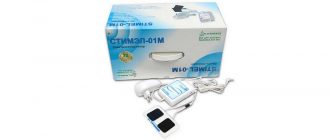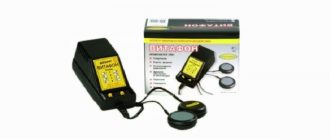Prostate shock wave therapy (SWT) is an effective procedure that is safe. Its use does not imply the use of medications, which reduces the burden on the body as a whole. Before starting therapy, you should consult a urologist and undergo the necessary diagnostic examinations. The effectiveness of this method reaches 80%.
Operating principle
In urology, UVT is prescribed for the following diseases:
- Abacterial prostatitis (chronic pelvic pain syndrome).
- Benign prostatic hyperplasia grade 1-2.
- Calculous prostatitis.
- Erectile dysfunction.
The causes of diseases are most often stagnation, causing inflammation and hardening of tissues.
Shock wave therapy for prostatitis is aimed at influencing the altered tissues of the organ with low-frequency impulses. The pulses are converted into a shock wave, which easily passes through undamaged areas.
The shock wave method of treating prostatitis helps to quickly relieve the symptoms of inflammation and reduce the duration of treatment of the disease. It is not used as an independent remedy, but as a physiotherapeutic procedure as part of a complex treatment.
Effect
By treating prostatitis with UVT it is possible to achieve a general improvement in the condition. After just a few procedures, most of the symptoms of the disease go away:
- swelling;
- pain;
- urination is normalized;
- erection improves and libido increases.
The use of shockwave therapy for prostatitis contributes to:
- improving metabolism at the local level directly in the prostate cells;
- crushing stones in the calculous form of the disease, which block the ducts and interfere with metabolism and circulation;
- regeneration of damaged tissues;
- improving the condition of the circulatory system.
Contraindications
Before undergoing the procedure, you must make sure that there are no contraindications to this method. UVT therapy for prostatitis is contraindicated in:
- bacterial infection. Exposure to waves can provoke the spread of infection to neighboring organs;
- last stage of prostate adenoma;
- calculous form of the disease with the presence of large calcifications;
- all types of purulent forms of the disease (catarrhal, follicular, parenchymal, abscess);
- recent hip injuries;
- oncology of the pelvic organs (accelerates the spread);
- osteoporosis;
- bougienage of the urethra (expansion using special tools);
- serious pathologies of the cardiovascular system;
- presence of a pacemaker;
- poor blood clotting.
Preparation and execution
Before undergoing prostate ultrasound it is necessary to undergo diagnostic examinations:
- Ultrasound of the pelvic organs.
- Bacterial tests.
- Palpation of the prostate.
This is necessary to exclude:
- bacterial cause of the disease;
- oncology;
- purulent prostatitis;
- to determine the size and volume of stones in calculous prostatitis.
During the procedure, the patient should lie on his back, slightly bending and raising his knees. A special gel is applied to the perineal area, which promotes better penetration of the waves. Then a device sensor with a nozzle is applied, through which an acoustic wave is supplied. The power of this effect is adjustable from 1 to 10 Hz.
The duration of the procedure is from 5 to 30 minutes. Number of sessions from 5 to 8.
Shock wave treatment of prostatitis can be performed on an outpatient basis, with a frequency of 1 time per week.
After completing the course, you need to repeat the examination.
After the first procedures, unpleasant sensations may occur that last from several hours to several days. Possible appearance:
- redness;
- swelling;
- very rarely superficial hematomas (due to capillary fragility);
- pain when urinating;
- feeling of heaviness in the perineum.
This is due to the fact that seals of various origins change and a new capillary network forms.



